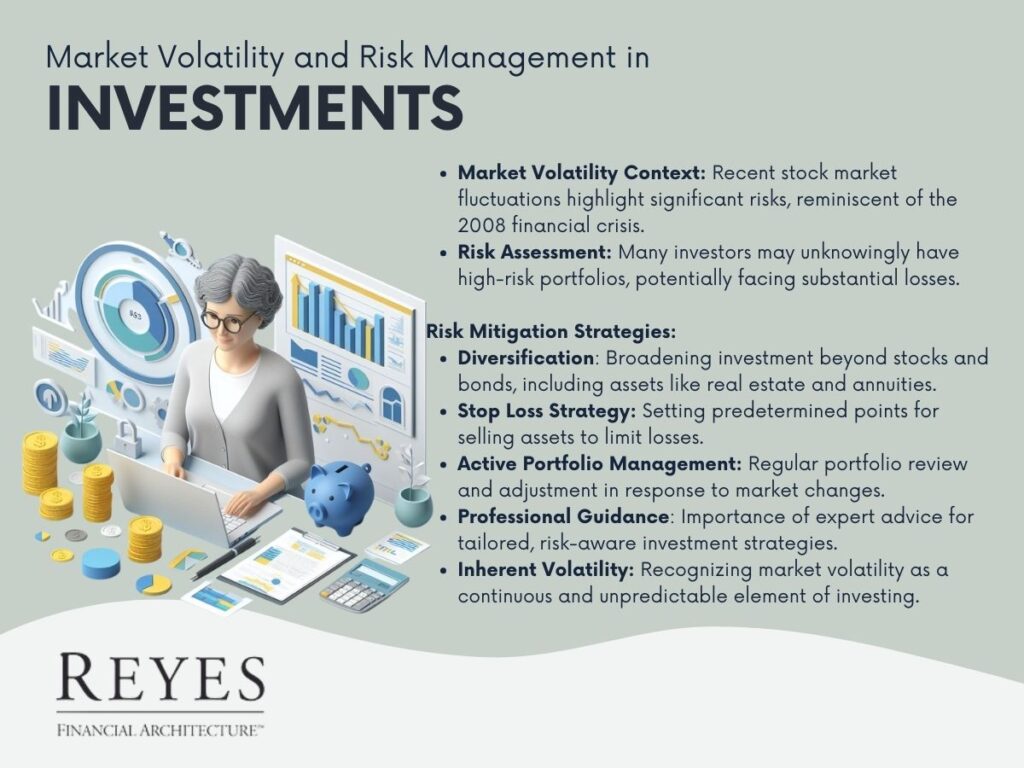In an era marked by significant market fluctuations, understanding and managing investment risks is essential. This article explores effective strategies to navigate the current volatile financial landscape, emphasizing the importance of diversified portfolios and proactive risk management for investors and advisors alike. It serves as a guide to facing market challenges with informed and strategic financial planning.

The recent fluctuations in the stock market have been a cause for concern for many investors. This was highlighted in a recent interaction where a client experienced a significant loss during the process of transferring funds from a major brokerage firm.
Such instances underscore the unpredictability and volatility that currently characterizes the financial markets. For instance, there were days when the Dow Jones Industrial Average (Dow) experienced a drop of about 700 points, translating to a 6-7% move within just two days. This level of volatility is reminiscent of the financial crisis of 2008, where the market plummeted by 55%.
A key aspect of investment strategy is understanding and managing risk. Many investors might not be fully aware of the level of risk present in their portfolios. For example, a review of one investor's portfolio showed a staggering 96% investment in stocks, with a potential downside of 55%.
On average, it's estimated that many could face a 30% loss in their portfolios if a financial crisis similar to 2008 were to occur again. This raises important questions about how individuals and their advisors manage investment portfolios.
For those managing their own investments, these market conditions can be particularly challenging. The lack of professional guidance may lead to decisions that inadvertently increase risk. Similarly, working with an advisor who adopts a passive approach to portfolio management can be equally risky. Investors are encouraged to seek professional advice tailored to their specific financial situations and goals.
It's crucial to recognize that market volatility is an inherent aspect of investing. Volatility tends to breed more volatility, making it unpredictable and continuous. Therefore, understanding and preparing for these fluctuations is key to successful long-term investment.
Investors concerned about their portfolio's exposure to market volatility should consider reaching out for professional financial advice. The aim should be to develop a strategy that aligns with their risk tolerance, investment goals, and the current economic landscape.
By adopting a proactive and informed approach to investment, individuals can better navigate the complexities of the financial markets, ensuring their portfolios are resilient against the unpredictable nature of market volatility.